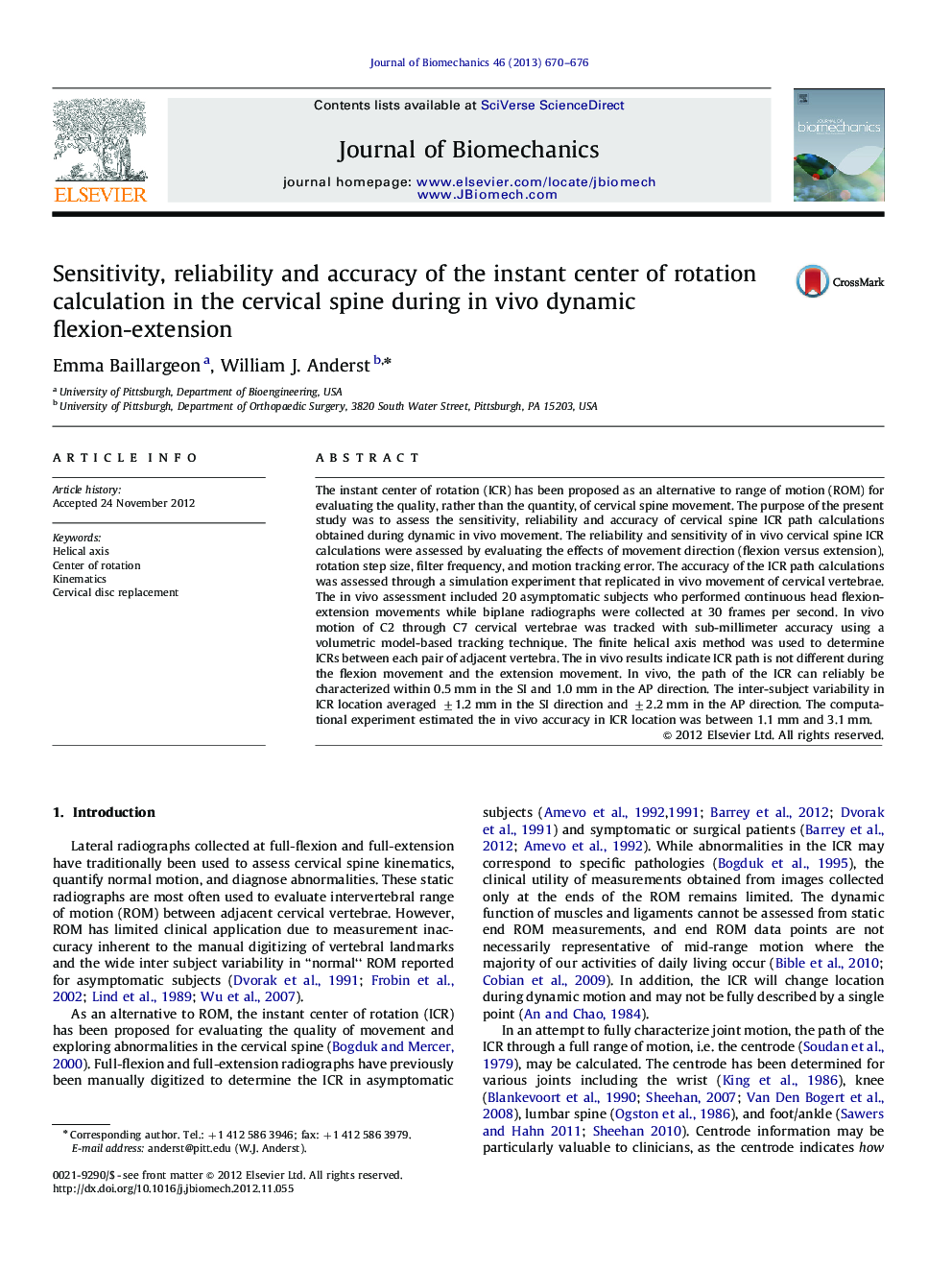| Article ID | Journal | Published Year | Pages | File Type |
|---|---|---|---|---|
| 10432927 | Journal of Biomechanics | 2013 | 7 Pages |
Abstract
The instant center of rotation (ICR) has been proposed as an alternative to range of motion (ROM) for evaluating the quality, rather than the quantity, of cervical spine movement. The purpose of the present study was to assess the sensitivity, reliability and accuracy of cervical spine ICR path calculations obtained during dynamic in vivo movement. The reliability and sensitivity of in vivo cervical spine ICR calculations were assessed by evaluating the effects of movement direction (flexion versus extension), rotation step size, filter frequency, and motion tracking error. The accuracy of the ICR path calculations was assessed through a simulation experiment that replicated in vivo movement of cervical vertebrae. The in vivo assessment included 20 asymptomatic subjects who performed continuous head flexion-extension movements while biplane radiographs were collected at 30 frames per second. In vivo motion of C2 through C7 cervical vertebrae was tracked with sub-millimeter accuracy using a volumetric model-based tracking technique. The finite helical axis method was used to determine ICRs between each pair of adjacent vertebra. The in vivo results indicate ICR path is not different during the flexion movement and the extension movement. In vivo, the path of the ICR can reliably be characterized within 0.5 mm in the SI and 1.0 mm in the AP direction. The inter-subject variability in ICR location averaged ±1.2 mm in the SI direction and ±2.2 mm in the AP direction. The computational experiment estimated the in vivo accuracy in ICR location was between 1.1 mm and 3.1 mm.
Related Topics
Physical Sciences and Engineering
Engineering
Biomedical Engineering
Authors
Emma Baillargeon, William J. Anderst,
